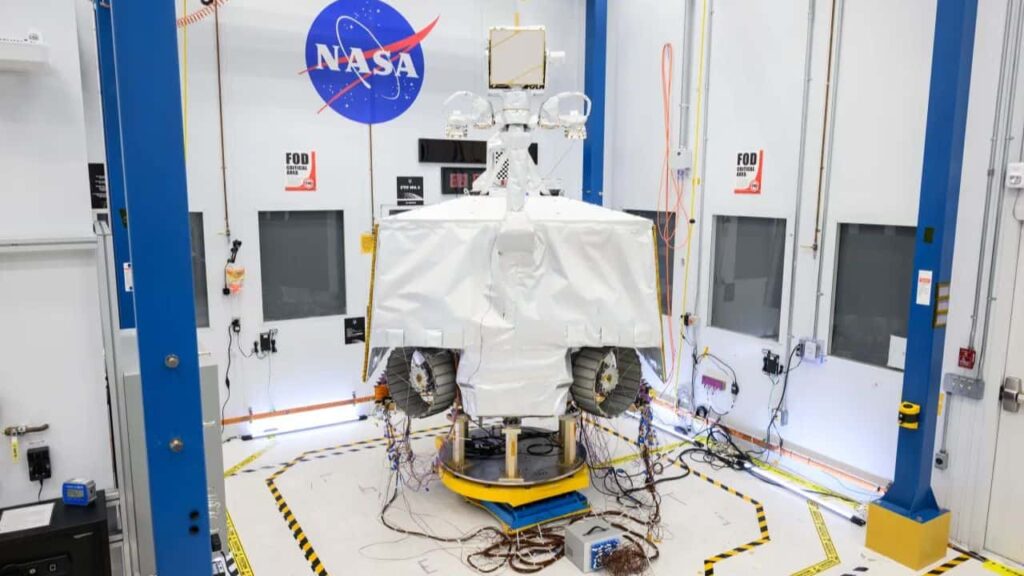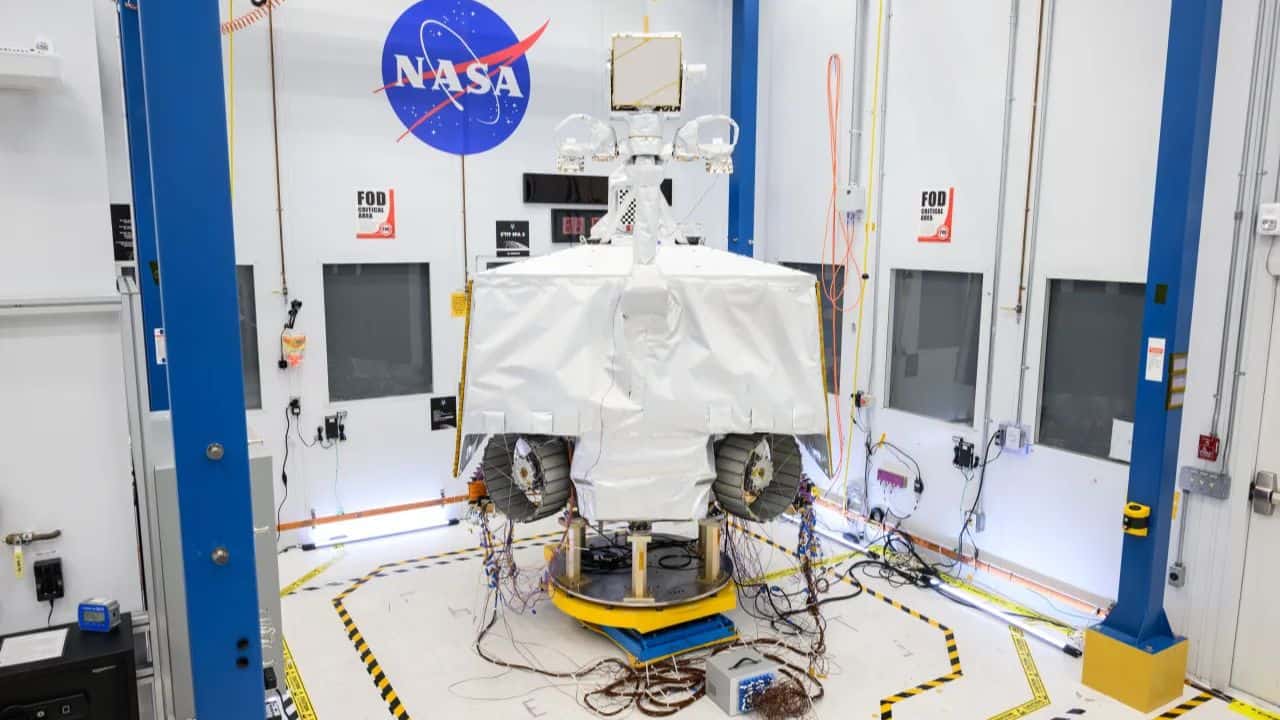NASA VIPER Rover, Lunar Exploration, Moon South Pole, Water Ice on Moon, Space Partnerships, NASA RFI, Lunar Resources, VIPER Rover Mission, Commercial Lunar Payload Services, Moon Rover Collaboration
Discover how NASA’s VIPER rover is opening new doors for public-private collaboration in lunar exploration. Learn about the potential partnerships, the rover’s mission, and the future of lunar resource exploration in this comprehensive article.

NASA Explores Industry and Partner Interest in Utilizing the VIPER Moon Rover
NASA has always been at the forefront of space exploration, constantly pushing the boundaries of what humanity can achieve in the quest to understand our universe better. One of the most ambitious projects that NASA has undertaken in recent years is the Volatiles Investigating Polar Exploration Rover, or VIPER. This advanced robotic rover was specifically designed to explore the South Pole of the Moon, mapping the location and concentration of potential off-planet resources such as water ice. However, in a recent turn of events, NASA announced its intent to discontinue the VIPER mission in its original form. Instead, the agency plans to pursue alternative methods to verify the presence of frozen water at the lunar South Pole. Despite this shift, NASA remains committed to maximizing the utility of the VIPER rover by seeking interest from American companies and institutions in conducting a mission using this sophisticated piece of technology.
The VIPER Mission: An Overview
The VIPER mission was an integral part of NASA’s Artemis program, which aims to establish a sustainable human presence on the Moon by the end of this decade. VIPER’s primary objective was to explore the South Pole region of the Moon, which is believed to harbor vast quantities of water ice in its permanently shadowed craters. The presence of this water ice is of enormous interest to NASA and other space agencies because it could potentially be used to support human life, as well as to produce rocket fuel, enabling longer-term human missions to the Moon and even beyond.
The VIPER rover was equipped with a suite of advanced scientific instruments designed to analyze the lunar soil and detect the presence of water ice. The data that VIPER was expected to collect would have significantly advanced our understanding of the distribution of water ice on the Moon, providing crucial information for planning future lunar exploration missions.
NASA’s Request for Information (RFI)
On July 17, 2024, NASA made a surprising announcement regarding the VIPER mission. The agency revealed its intent to discontinue the mission in its original form, opting instead to explore alternative methods for verifying the presence of frozen water at the lunar South Pole. However, recognizing the substantial investment that had already been made in the development of the VIPER rover, NASA issued a Request for Information (RFI) to gauge interest from American companies and institutions in using the existing VIPER rover system for a mission of their own.
The RFI, which was open from July 17 to August 1, invited expressions of interest from U.S. organizations and industry. NASA sought to learn more about how interested parties might utilize the VIPER rover, particularly at minimal or no cost to the government. This initiative reflects NASA’s commitment to ensuring that the valuable engineering, technology, and expertise developed for the VIPER project are not wasted, even as the agency shifts its focus to other lunar exploration priorities.
The Potential for Public-Private Partnerships
NASA’s decision to issue an RFI represents an exciting opportunity for American companies and institutions to collaborate with the agency on a lunar exploration mission. By partnering with NASA, these organizations could gain access to the highly advanced VIPER rover, which has already been developed and tested, thereby significantly reducing the time and cost required to conduct a lunar mission.
Nicola Fox, the Associate Administrator for NASA’s Science Mission Directorate, emphasized the importance of making the best use possible of the VIPER rover. She noted that partnership opportunities with VIPER would allow NASA to advance scientific knowledge of the Moon without impacting the agency’s future cadence of commercial deliveries to the lunar surface. By partnering with external organizations, NASA can continue to pursue its broader lunar exploration goals while still making use of the VIPER rover.
This approach aligns with NASA’s broader strategy of fostering public-private partnerships in space exploration. By collaborating with private industry, NASA can leverage the expertise, resources, and innovation of the commercial sector to achieve its ambitious goals. This model has already proven successful in other areas, such as the Commercial Crew Program, which has seen private companies like SpaceX and Boeing develop spacecraft to transport astronauts to and from the International Space Station.
Why Lunar Exploration Matters
NASA’s decision to discontinue the VIPER mission in its original form should not be interpreted as a lack of interest in lunar exploration. On the contrary, NASA remains deeply committed to exploring the Moon, particularly its South Pole region. The potential discovery of water ice on the Moon is of immense strategic importance, both for supporting future human missions and for enabling the production of resources that could be used for further space exploration.
In recent years, there has been a resurgence of interest in lunar exploration, driven by advances in technology and a renewed focus on the potential for human settlement beyond Earth. The Moon is seen as a stepping stone to Mars and other destinations in the solar system, and understanding its resources is a critical part of that journey. The data collected by missions like VIPER will be invaluable in planning future lunar missions, both crewed and uncrewed.
The Future of the VIPER Rover
As NASA explores interest from American companies and institutions in using the VIPER rover, the future of this advanced piece of technology remains uncertain. However, the agency’s decision to seek partnerships reflects its commitment to maximizing the return on investment from the VIPER project, even as it shifts its focus to other methods of lunar exploration.
The response to the RFI will likely play a crucial role in determining the future of VIPER. If sufficient interest is generated, the rover could still play a significant role in advancing our understanding of the Moon’s South Pole and its potential resources. This, in turn, could inform future NASA missions and help pave the way for sustainable human exploration of the Moon.
The Role of Commercial Lunar Payload Services (CLPS)
NASA’s Commercial Lunar Payload Services (CLPS) initiative plays a vital role in the agency’s lunar exploration efforts. CLPS is designed to enable rapid and cost-effective delivery of scientific instruments and technology demonstrations to the lunar surface through partnerships with commercial companies. These deliveries are intended to advance NASA’s understanding of the Moon’s surface and resources, ultimately supporting the agency’s long-term goal of sustainable lunar exploration.
While the VIPER mission was initially planned to be a significant part of NASA’s lunar exploration strategy, the agency’s decision to discontinue the mission in its original form suggests a shift in focus toward other CLPS deliveries and crewed missions. However, the potential for VIPER to be utilized by a commercial partner or institution could still contribute to NASA’s broader goals of assessing volatiles across the South Pole region.
Conclusion
NASA’s decision to discontinue the VIPER mission in its original form is a testament to the dynamic nature of space exploration. As new challenges and opportunities arise, the agency must continually reassess its priorities and strategies. However, the issuance of the RFI demonstrates NASA’s commitment to ensuring that the valuable work done on VIPER does not go to waste.
By inviting American companies and institutions to express interest in using the VIPER rover, NASA is opening the door to new possibilities for collaboration and innovation. These partnerships could help advance our understanding of the Moon and its resources, paving the way for future exploration and potentially even human settlement.
As we look to the future, it is clear that the exploration of the Moon will continue to be a key priority for NASA and the broader space community. The potential for discovering and utilizing resources on the Moon is vast, and the work done by missions like VIPER will be instrumental in unlocking that potential. Whether through NASA’s own efforts or in partnership with other organizations, the quest to understand and explore the Moon is far from over. The VIPER rover, with its advanced technology and mission capabilities, may yet have a vital role to play in that journey.
Read More
- Judge Dismisses Alec Baldwin Rust Manslaughter Case Due to Withheld Evidence
- Retired Navy Capt. Hung Cao Wins GOP Primary to Challenge Sen. Tim Kaine in Virginia Senate Race
- UN Security Council Passes U.S.-Drafted Cease-Fire Resolution to End Israel-Hamas Conflict
- Nick Foles Super Bowl LII MVP Retires as a Philadelphia Eagle A Legendary Career Remembered
